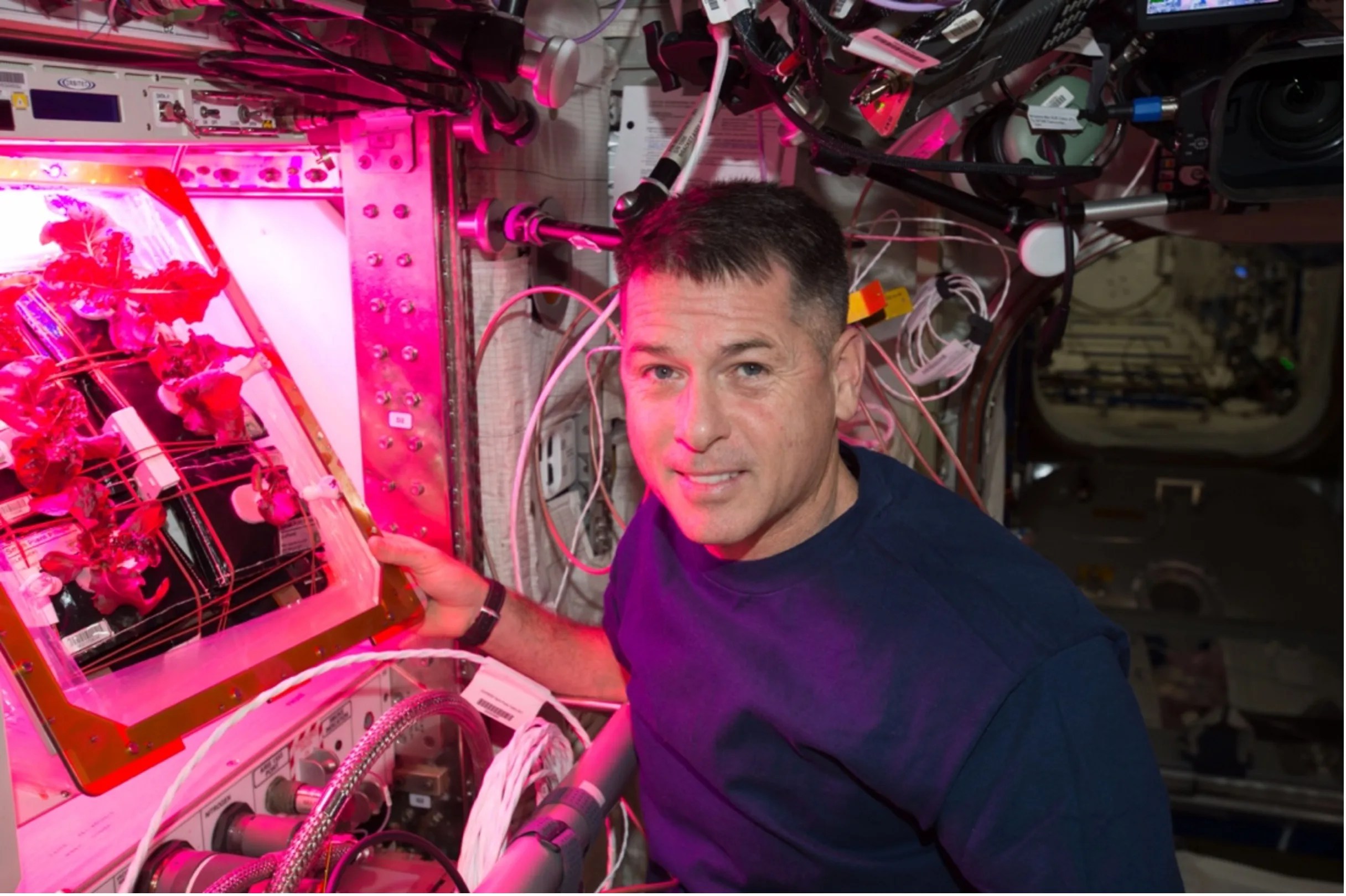Pick-and-eat Salad-crop Productivity, Nutritional Value, and Acceptability to Supplement the ISS Food System (Veg-05)
Science Objectives
The Pick-and-Eat Salad-Crop Productivity, Nutritional Value, and Acceptability to Supplement the ISS Food System (Veg-05) investigation is the next step in efforts to address the need for a continuous fresh-food production system in space. A healthy, nutritious diet is essential for long-duration exploration missions, which means that the typical pre-packaged astronaut diet may need to be supplemented by fresh foods during flight; the Vegetable Production System (Veggie) has begun testing aboard the International Space Station to help meet this need, and leafy greens have successfully been grown in spaceflight. The research of Veg-05 expands crop variety to dwarf tomatoes and focuses on the impact of light quality and fertilizer on fruit production, microbial food safety, nutritional value, taste acceptability by the crew, and the overall behavioral health benefits of having plants and fresh food in space.
Status
Delivery to the International Space Station via the SpaceX-26 Commercial Resupply Service mission.

Experiment Description
Pick-and-eat Salad-crop Productivity, Nutritional Value, and Acceptability to Supplement the ISS Food System (Veg-05) is a hybrid investigation with plant research, as well as human organoleptic and behavioral research. The investigation, which is the second half of an investigation that began with Veg-04, is sponsored by the Human Research Program, but is implemented in partnership with Biological and Physical Sciences. The Veg-05 team includes researchers from Kennedy Space Center (KSC), Johnson Space Center (JSC), Purdue University and Sierra Space.
For this study, salad plants (leafy greens for Veg-04 and dwarf tomatoes for Veg-05) are grown in the Veggie units during spaceflight, focusing on the impact of light quality and fertilizer formulation on crop morphology, edible biomass yield, microbial food safety, organoleptic acceptability, nutritional value, and behavioral health benefits of the fresh produce. The first phase of the project (Veg-04) involves flight tests using Mizuna Mustard, a leafy green crop previously down-selected through a series of research tests as a suitable candidate. The second phase (Veg-05) focuses on growth of dwarf tomatoes. Flight definition testing has assessed different red-to-blue light recipes and fertilizer formulations for optimum growth of these crops on the ground. Two light treatments with different red-to-blue ratios are tested for each crop on the ISS. This investigation is expected to help define light colors, levels, and horticultural best practices to achieve high yields of safe, nutritious leafy greens and tomatoes to supplement a space diet of pre-packaged food. A duplicate ground-study provides a comparison to the plants grown on the ISS to determine the effects of spaceflight.
Space Applications
Future crewed exploration missions, such as missions to Mars, may require a fresh food supply to supplement the pre-packaged crew meals. The capability to grow nutritious, palatable food for crew consumption during spaceflight has the potential to provide not only healthy and nutritious meals, but to enhance the dietary experience and living experience as well. Crop bio-regeneration reduces launch mass, a necessity for longer-duration missions. The Veg-05 investigation is expected to help define light colors and horticultural best practices to achieve high yields of safe, nutritious dwarf tomato fruit to supplement a space diet of pre-packaged food and to assess any psychological impacts that growing plants might have on the astronauts.
Earth Applications
Urban sprawl encroaching on traditional farms and the increasing population have added to the need for supplemental food production. Results from Veg-05 are expected to contribute to basic research on controlled environment plant cultivation, especially focusing on the importance of light colors in growth, and this increased understanding could translate into improved agricultural and biomass production efforts on Earth. As the hardware used with this investigation is like a miniature greenhouse, the hardware could be adapted for horticultural therapy for elderly or disabled individuals, or for individuals who live without access to a yard and would otherwise be unable to enjoy the results of fresh produce from a garden.




